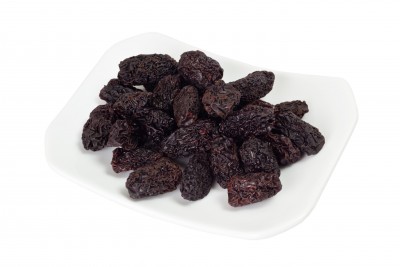Jujube - Ziziphus jujuba

Common Names: jujube, Chinese date, Chinese jujube, red date, Ziziphus jujuba, cicimek, Ziziphus, international jujube, Indian jujube
Latin Name: Ziziphus jujuba
Origin: Africa, Asia, Europe
Short Introduction
Jujube typically thrives in warm subtropical climates, but it can also adapt well to temperate regions. It prefers sunny conditions, though appreciates some degree of wind protection. This plant is undemanding when it comes to soil, thriving even in poor-nutrient environments. The ideal temperature for growth and fruiting is around 25°C, but jujube is surprisingly hardy, tolerating winter fluctuations down to -20°C. In Central European climates, it’s recommended to plant pre-grown jujube specimens from a nursery rather than starting from seed.
Detailed Description
Jujube is a subtropical tree or shrub known for its nutrient-rich fruits, widely used in both traditional and modern wellness practices.
Botanical Information
Jujube (Ziziphus jujuba) is a tree or large shrub usually found in subtropical zones. Although its trunk is not especially thick, it can grow to heights of 3–4 meters, occasionally taller. The plant bears fresh green, alternately arranged, ovate leaves often accompanied by pairs of black thorns. The fruits are drupes, either pear-shaped or round, that turn red as they ripen.
Origin and Distribution
Jujube originated in ancient China and India, where it has been cultivated for its sweet fruits since at least 2000 BCE. Its popularity in those regions led to its spread throughout Asia, the Mediterranean, and other subtropical areas. Today, jujube is bred intensively, resulting in many unique cultivars.
Usage / Dosage
Nearly all parts of the Chinese jujube can be used: leaves, fruits, and seeds. The fruit is the most widely utilized. In traditional Chinese medicine, jujube fruit is chiefly regarded for its detoxifying effects—it is believed to support liver health, benefit kidney ailments, purify the blood, and help reduce blood pressure. Jujube is renowned as one of the prime natural antioxidants, helping to neutralize free radicals. Similar to prunes, with which its fruits share a resemblance, jujube fruit also has a mild laxative effect. These "vitamin bombs" contain a remarkable amount of vitamin C (250–600 mg per 100g), surpassing even citrus fruits. Jujube also supplies a wealth of other vitamins and minerals, such as riboflavin (B2), thiamin (B1), pyridoxine (B6), provitamin A, as well as iron, calcium, potassium, magnesium, phosphorus, sodium, zinc, copper, manganese, and iodine. The rich nutrient profile makes jujube one of the most comprehensive natural sources available. Traditionally, jujube fruit is used for soothing sore throats and aiding recovery, supporting liver health and red blood cell production. Jujube is also recognized as an adaptogen, helping the body combat stress and promoting calmness and restful sleep when taken regularly.
Jujube seeds have a different action spectrum: they are regarded as tonics, helping to fortify weak bodies, alleviate insomnia, and soothe frazzled nerves from stress. In contrast, jujube leaves are known for their ability to reduce fever and mitigate chills during infections.
Active Compounds
Jujube fruits are especially rich in vitamins and minerals, with particularly high levels of vitamin C and B-complex nutrients, as well as carotenes. Key minerals include iron, calcium, and potassium, critical for maintaining healthy blood properties. Jujube also has a notably higher sugar content—about a quarter more—than most other fruits. A unique compound called ziziphin, present in the leaves, has the fascinating ability to temporarily block the tongue's sweet taste receptors.
Traditional Dosage
Jujube fruit is frequently used as a natural sweetener in various teas, such as teas blended with Japanese pagoda tree to detoxify and harmonize the body. This blend is typically consumed at a dose of about 1 gram in the morning and evening, either 15 minutes before or an hour after a meal. The fruits can also be enjoyed on their own as a sweet treat, though the recommended daily intake should not exceed 10 grams. Split this daily amount into two doses (one pitted fruit weighs about 3.3 g).
